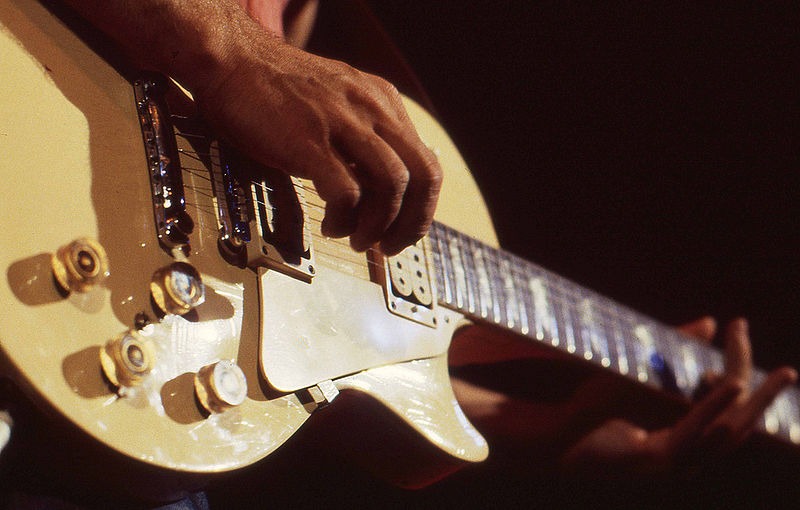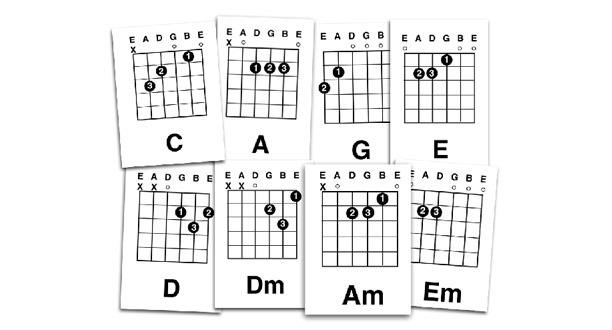When you think about the guitar sound effects, it is usually the flashier ones such as the wah pedal, the distortion or the flanger effect that pop up to your mind first. However, there is yet another guitar effect that can be described as even more crucial than any of the ones we have just mentioned. It’s compression we’re talking about – a subtle yet crucial effect that can make that difference between an amazing guitar tone and utter rubbish. Many guitarists tend to overlook it, often ending up with a poor guitar sound, so you’ll definitely want to gain a thorough understanding of how the compression works and how to use it right.
So let’s first explain just what the guitar compression exactly is – essentially, it is an effect that levels the sound dynamics. Sounds simple enough, now doesn’t it? So it takes all of the notes the musician played that stand out in terms of loudness and levels them accordingly to the overall recording volume, resulting in more of a leveled, some might say cleaner tone. The producer can use the threshold control options and adjust the exact volume point at which the effect will take place. This is definitely one of the more important control options seeing that it has the ability to greatly interfere with the sound and ultimately the entire recording.
To make you get the importance of sound compression, we will just say that it can be found literally everywhere throughout the whole recording, start to finish. So a solid portion of your favorite tracks most likely have the compression applied during their entire length without a lot of people even realizing it is there in the first place, unlike say, the wah effect or the distortion mentioned beforehand which are hard to miss for pretty much anyone remotely familiar with guitar effects.
What the compression precisely does is that it initially grabs the sound signal, holds it and finally releases it. Apart from the threshold control we already discussed, you should also be aware of the so-called ration control which allows you to precisely set up to which extent the compression will affect the sound, or the signal. The overall aggression and grittiness of the output signal can be controlled by adjusting the Hard and Soft buttons. As you might have already guessed, the Hard button will make the sound more aggressive and in-your-face, while the soft button will give it more of a mellow, subtle color and overall feel.
So basically, the proper use of compression also depends to a great extent on the type of music you are planning to play or record. If you need the signal volume stabilized, as it is often the case in hard rock and heavy metal music, you should apply a solid dose of sound compression. On the other hand, you should leave the signal of acoustic guitars in a bit more of a natural, somewhat raw state, seeing that too much compression can result in complete loss of the original charm and authenticity. Taking the soul away from your music by using too much compression is a great risk, so approach it with caution.
As usual, to get the best results you will need to put a certain amount of time and effort into the whole process. So it’s not only about figuring out all the knobs but getting the genuine feel of how compression works not only when you are jamming solo, but also when the entire band – or at least the rhythm section – is involved. So firstly, get the idea of how much compression is too much compression and how much of it is too little. We’ve already underlined this and still can’t stress enough just how important it is.
The next smart move is to have it all figured out with your bandmates, especially when it comes to studio recordings. If you are in the studio, it is often the best choice to first have the drummer complete the recording of his parts before you venture into setting up the compression adjustments. Ideally, the whole rhythm section should be done with the recording part of the process, so get the bassist involved as well. Only with the song’s foundation well laid can you precisely see how much compression you really need to apply to your guitar’s output signal.
But of course it’s not just the positive aspects the compression can bring. Leveling the sound and the notes you played in an improper manner can cause the whole recording to sound blunt and lifeless. This can prove as devastating for such music genres as blues and blues rock, where the entire performance heavily relies on the artist’s raw expression and natural dynamics. However, if you’re looking to record some sweep shredding at 320 bpm with thousands of notes played within each second, you’ll definitely need to apply the compression, as the recording will sound cleaner and each of the tones will stand out more distinctively.
Another interesting use of guitar compressors can be noted in case you are looking to get more sustain effect on your guitar tone. Prime example of such use can be seen in the work of legendary Pink Floyd guitarist and solo artist David Gilmour who heavily relied on guitar compressors in order to get significantly more sustain effect in his tone.
So to sum it all up – the most important thing is to initially understand just how crucial can the signal compression be for the sound of both your guitar and your whole band. After you have stopped overlooking the compression aspect, you can start experimenting with it and getting the best tone you can. Once again, we’ll point out the importance of getting the whole band involved, which is something that applies to basically all aspects of playing – it’s always better if you join forces with the rest of the guys and get some constructive work under way. So all in all – don’t hold yourself back, take it easy, work hard and rock steady.












Add comment